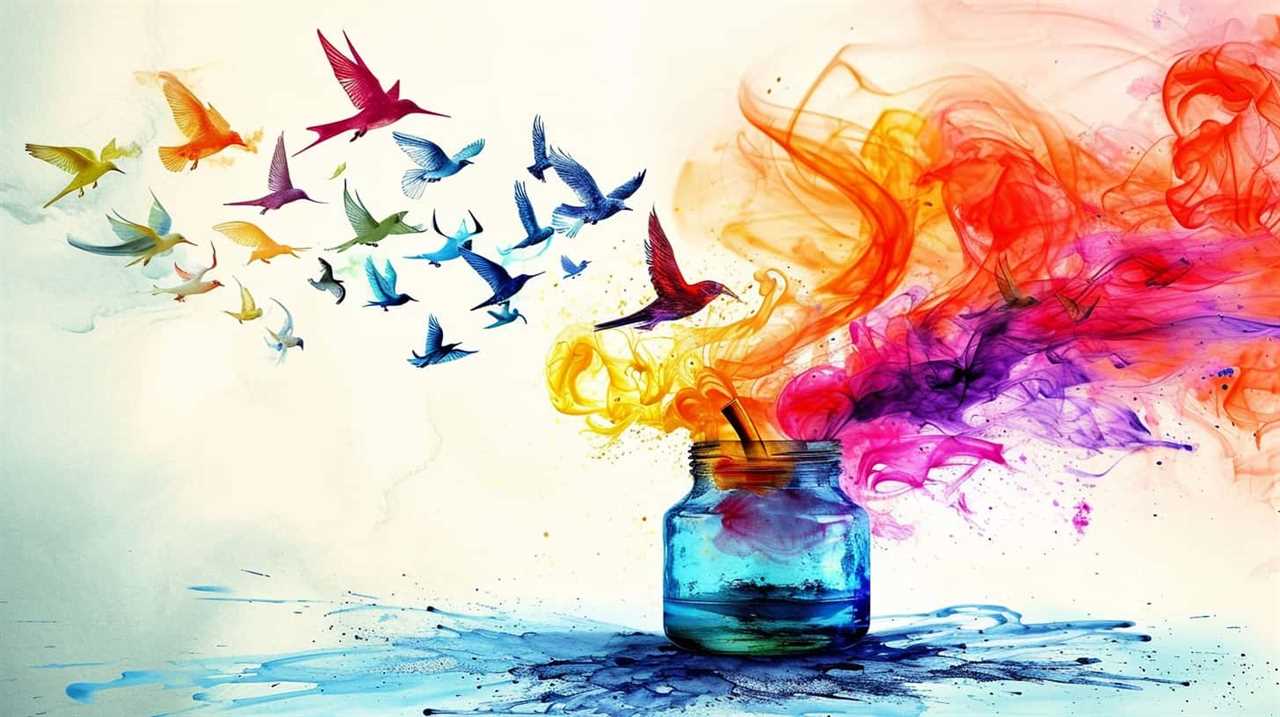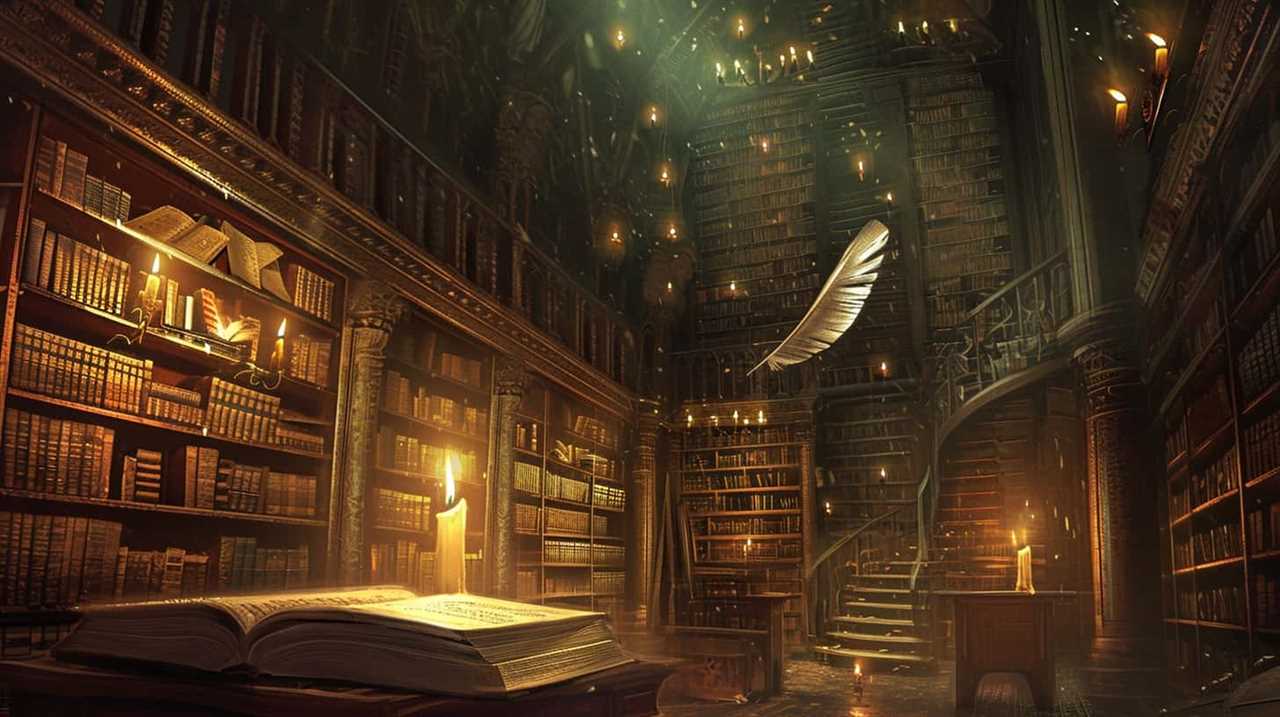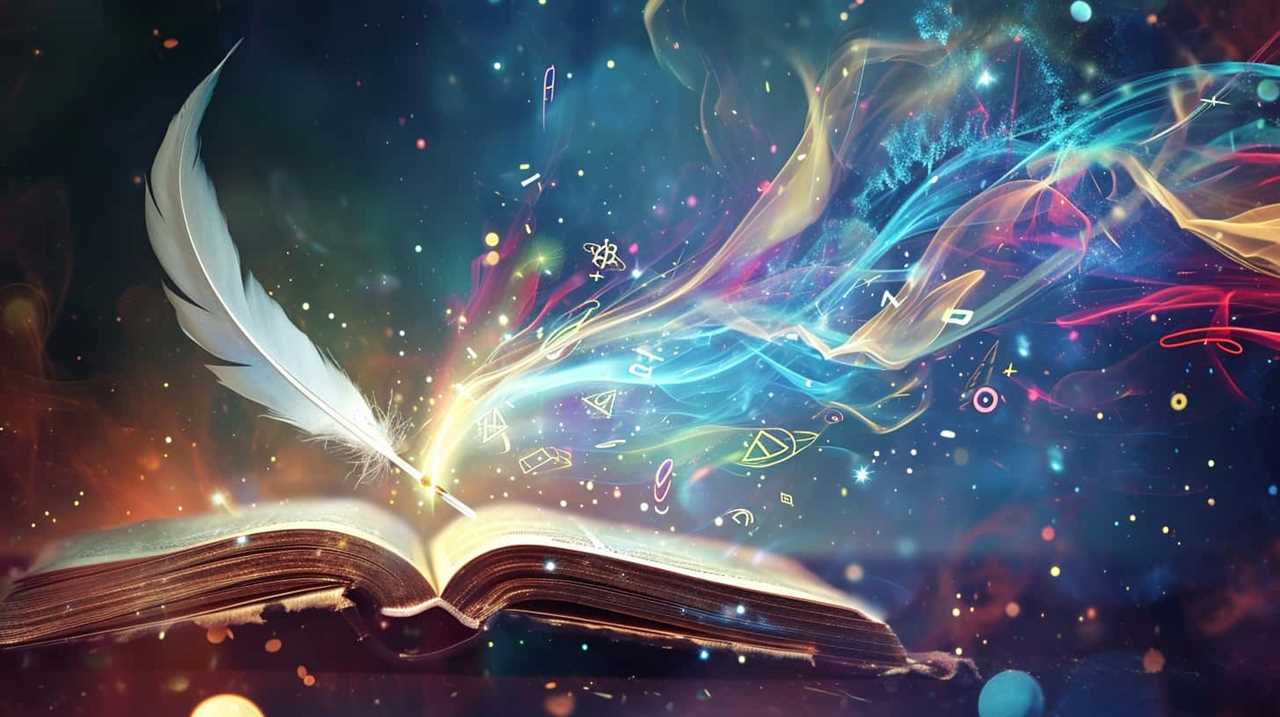So, you believe you have experienced all there is to romantic poetry? Get ready to have your beliefs challenged. We have searched through literary history to present to you the best of the best romantic poetry lines from the most brilliant writers of all time.
These lines are not your run-of-the-mill, cliché-ridden verses. No, dear reader, they are the epitome of innovation, pushing the boundaries of love and language. From Shakespeare’s comparisons to summer days to Dickinson’s wild nights, each line will ignite a spark of inspiration within you.
So, sit back, relax, and let us take you on a journey through the seven best romantic poetry lines from the minds of famous poets. Prepare to be captivated.
Key Takeaways
- Romantic poetry utilizes vivid imagery and descriptive language to captivate readers.
- It often compares the beloved to natural elements, such as a summer’s day or a star, to convey their beauty and purity.
- Romantic poets explore the power of love and its transformative force, longing for constancy and immortality.
- The connection between nature and human emotions is a common theme, showcasing the depth and intensity of human feelings.
William Shakespeare’s Sonnet 18: "Shall I Compare Thee to a Summer’s Day
In exploring William Shakespeare’s Sonnet 18, we’re captivated by the poet’s use of vivid imagery and a reflective tone. This sonnet, also known as ‘Shall I Compare Thee to a Summer’s Day,’ delves deep into the meaning behind love and beauty. Shakespeare employs powerful imagery and descriptive language to convey his message.

The poem opens with a comparison of the beloved to a summer’s day, setting the stage for a discussion on the transient nature of beauty. Through the use of metaphors, Shakespeare highlights the flaws of the summer’s day, emphasizing the superiority of the beloved’s beauty. He goes on to describe the beloved’s beauty as eternal, surpassing the ravages of time.
Shakespeare’s choice of words creates a vivid picture in the reader’s mind. He uses phrases such as ‘rough winds do shake the darling buds of May’ to illustrate the imperfections of nature. This imagery showcases the fragility of the summer’s day in contrast to the enduring beauty of the beloved.
Furthermore, the reflective tone of the poem adds depth to its meaning. Shakespeare contemplates the passing of time and the immortality of art. He suggests that through his words, the beloved’s beauty will live on forever. This introspective tone invites the reader to ponder the power of love and the significance of immortalizing it through poetry.
Elizabeth Barrett Browning’s Sonnet 43: "How Do I Love Thee? Let Me Count the Ways
Continuing our exploration of famous romantic poetry lines, we now turn our attention to Elizabeth Barrett Browning’s Sonnet 43, where she beautifully expresses her love for someone in the poem titled ‘How Do I Love Thee? Let Me Count the Ways’. In this sonnet, Browning delves into the depths of the meaning of love and showcases the power of words to convey the intensity of her emotions.

- Love as an infinite entity: Browning’s poem suggests that love knows no bounds or limitations. It transcends time, space, and even death itself, emphasizing its eternal nature.
- Love as a transformative force: Browning’s words convey how love has the ability to change and uplift both the lover and the beloved. It has the power to heal wounds, inspire growth, and bring about personal transformation.
- Love as a language of its own: Through the use of vivid imagery and poetic devices, Browning demonstrates how love can be expressed and understood through words. The poem itself becomes a testament to the ability of language to capture and convey the complexities of love.
- Love as a source of strength: Browning’s sonnet highlights how love can provide solace, support, and resilience in the face of challenges. It becomes a source of strength that enables individuals to overcome obstacles and find comfort in each other’s presence.
Elizabeth Barrett Browning’s Sonnet 43 not only captures the essence of love but also showcases the power of words in expressing the depth and intensity of human emotions. It serves as a reminder that love, when articulated with sincerity and passion, has the ability to transcend time and leave a lasting impact on those who experience it.
Lord Byron’s She Walks in Beauty: "She Walks in Beauty, Like the Night
Let’s delve into Lord Byron’s She Walks in Beauty, where he vividly portrays a woman’s elegance with the line ‘She Walks in Beauty, Like the Night’. This powerful image sets the tone for the entire poem, captivating readers with its striking imagery. Byron’s use of symbolism and metaphor invites us to explore the depths of beauty and darkness.
Byron’s choice of comparing the woman to the night creates a sense of mystique and allure. The night is often associated with darkness, mystery, and tranquility. In this context, the woman’s beauty isn’t just about physical appearance but also about the intangible qualities she possesses. Her grace and elegance shine through, much like the beauty of the night.
The imagery analysis in this line showcases Byron’s ability to capture the essence of beauty in a few words. The juxtaposition of light and darkness creates a sense of balance and harmony. The woman’s beauty, like the night, is both captivating and calming.

Furthermore, the symbolism in ‘She Walks in Beauty, Like the Night’ signifies the woman’s inner beauty and purity. The night is often seen as a time of reflection and introspection, and by associating the woman with the night, Byron suggests that her beauty radiates from within.
In summary, Lord Byron’s She Walks in Beauty mesmerizes readers with its vivid imagery, symbolism, and metaphorical exploration. The line ‘She Walks in Beauty, Like the Night’ encapsulates the woman’s elegance and inner beauty.
With this analysis in mind, let’s now transition to John Keats’ ‘Bright Star! Would I Were as Steadfast as Thou Art’ and explore another masterpiece of romantic poetry.
John Keats’ Bright Star: "Bright Star! Would I Were as Steadfast as Thou Art
We are now ready to delve into John Keats’ masterpiece, where he longs to possess the unwavering constancy of a ‘Bright Star!’. In this poignant sonnet, Keats explores the meaning behind the imagery and language he employs, creating a profound reflection on the nature of love and human existence.

- The star symbolizes steadfastness and eternal constancy, contrasting with the speaker’s own transient and fragile existence.
- Keats uses vivid visual imagery to depict the star’s brilliance and its unwavering presence in the night sky, emphasizing the speaker’s desire for such constancy.
- The repetition of the phrase ‘would I were’ conveys the speaker’s longing and yearning for the star’s immutability.
- The use of personification in addressing the star as though it were a person adds a sense of intimacy and emotional depth to the poem.
Through his evocative language and imagery, Keats captures the universal longing for permanence and stability in the face of life’s fleeting nature.
As we now transition to Percy Bysshe Shelley’s ‘Love’s Philosophy: ‘The fountains mingle with the river”, we’ll explore another poet’s interpretation of love’s essence and its connection to the natural world.
Percy Bysshe Shelley’s Love’s Philosophy: "The Fountains Mingle With the River
In the poem ‘Love’s Philosophy: ‘The Fountains Mingle With the River,’ Percy Bysshe Shelley explores the interconnectedness of love and nature. Shelley uses the symbolism in nature to depict the meaningful connections between individuals in love.
The poet starts by describing how the fountains mingle with the river, highlighting the blending of different elements in nature. This merging symbolizes the unity and harmony found in love. Shelley suggests that just as the fountains and river mix together, so should the souls of two lovers.

Furthermore, Shelley emphasizes the eternal aspects of love by referring to the moonbeams kissing the sea. The moon, a symbol of timelessness, represents the everlasting nature of love. By connecting the moonbeams to the sea, Shelley portrays the intimate and passionate union between two lovers.
Through his use of symbolism in nature, Shelley reveals the profound connection between love and the natural world. He suggests that love isn’t isolated from the environment but rather intricately intertwined with it. This perspective challenges conventional notions of love and invites the audience to reimagine the depths of human connection.
Shelley’s exploration of the meaningful connections in love through the symbolism in nature offers an innovative and thought-provoking perspective on romantic relationships. It encourages readers to appreciate the beauty and interconnectedness of love and the natural world.
Robert Burns’ a Red, Red Rose: "O My Luve Is Like a Red, Red Rose
Continuing the exploration of interconnectedness in love and nature, we now turn our attention to Robert Burns’ timeless poem, ‘A Red, Red Rose: ‘O My Luve Is Like a Red, Red Rose’.

In this beautiful piece of romantic poetry, Burns uses meaningful comparisons, symbolism, and metaphor to convey the depth of his love.
- The rose: Burns compares his love to a red rose, symbolizing its beauty, delicacy, and passion. Just as a rose captivates with its vibrant color and sweet scent, his love captivates his heart and senses.
- The enduring nature of love: Burns expresses his belief that his love will last until the seas go dry and the rocks melt with the sun. This comparison emphasizes the everlasting quality of his affection.
- The redness of the rose: The color red symbolizes intense emotions like love and desire. By comparing his love to a red rose, Burns intensifies the passion and ardor he feels for his beloved.
- The repetition of ‘O My Luve’: The repetition of this phrase throughout the poem emphasizes the deep emotional connection between the speaker and his beloved, reinforcing their bond.
Through these meaningful comparisons, symbolism, and metaphors, Burns paints a vivid and enduring picture of love. His words transcend time and continue to resonate with readers, reminding us of the power and beauty of love in its purest form.
Emily Dickinson’s Wild Nights: "Wild Nights – Wild Nights!
Upon reading Emily Dickinson’s poem ‘Wild Nights – Wild Nights!’, one can’t help but be captivated by the underlying meaning behind the passionate words.
The poem delves into the intense emotions experienced during wild nights of love, evoking a sense of longing and desire.

Through vivid imagery and descriptive language, Dickinson paints a vivid picture of the passionate and untamed nature of these nights, leaving the reader with a sense of awe and fascination.
Meaning Behind the Passion
As we delve into the meaning behind the passion in Emily Dickinson’s ‘Wild Nights: ‘Wild Nights – Wild Nights!’, we’re captivated by the intensity and longing portrayed in her poetic lines. Dickinson’s poem employs powerful symbolism to convey the depth of passionate desire.
Through her use of metaphor and imagery, she transports the reader to a world of wild nights filled with unrestrained love and longing. The power of language is evident in the way Dickinson’s words evoke intense emotions and create a vivid sensory experience. Her ability to capture the essence of passion through her carefully chosen words is a testament to the profound impact of language in expressing the depths of human desire.
In ‘Wild Nights: ‘Wild Nights – Wild Nights!’, Dickinson skillfully uses symbolism and language to convey the overwhelming intensity of passion.

Imagery and Descriptive Language
We are immediately drawn into the vivid world of passionate longing in Emily Dickinson’s ‘Wild Nights: ‘Wild Nights – Wild Nights!’ through the masterful use of imagery and descriptive language. Dickinson employs symbolism in romantic poetry to evoke a sense of wildness and freedom.
The repetition of the phrase ‘wild nights’ creates a rhythmic intensity that mirrors the speaker’s intense desire. The use of the word ‘wild’ suggests a release from societal constraints and a connection with nature, which is a common theme in romantic poetry.
Dickinson’s choice of words such as ‘plank’ and ‘sail’ conjures images of the vastness and unpredictability of the ocean, further emphasizing the speaker’s yearning for adventure and escape.
Through her vivid imagery and evocative language, Dickinson transports us to a realm of passionate longing, where the boundaries of the physical world dissolve, and the power of desire reigns supreme.

Frequently Asked Questions
What Is the Historical Context of William Shakespeare’s Sonnet 18?
Shakespeare’s Sonnet 18 holds great historical significance, reflecting the cultural impact of the Renaissance era. Its exploration of love and immortality resonates throughout time, showcasing the enduring power of poetic expression.
How Does Elizabeth Barrett Browning’s Sonnet 43 Reflect Her Personal Experiences?
Elizabeth Barrett Browning’s influence on Romantic poetry analysis is evident in her sonnet 43, which reflects her personal experiences through its passionate and introspective tone. The poem showcases her deep love and longing, making it a standout in the genre.
What Inspired Lord Byron to Write "She Walks in Beauty"?
Lord Byron was inspired to write "She Walks in Beauty" by the mesmerizing presence of a woman. His writing process involved capturing the delicate balance of darkness and light in her appearance, resulting in one of the most iconic romantic poetry lines.
What Other Works Is John Keats’ "Bright Star" Often Compared To?
Bright Star, by John Keats, is often compared to other works of Romantic poetry for its exploration of themes such as love, beauty, and mortality. The poem’s vivid imagery and lyrical language make it a standout in the genre.

How Does Percy Bysshe Shelley’s "Love’s Philosophy" Explore the Theme of Nature?
Love’s Philosophy by Percy Bysshe Shelley explores the interconnectedness of love and nature, portraying the power of natural elements in love. It showcases a romantic perspective on how nature’s forces mirror the intensity and beauty of human emotions.
Conclusion
In exploring these 7 best romantic poetry lines from famous poets, it becomes evident that love is a universal theme that transcends time and place. These poets have beautifully captured the essence of love and its various manifestations.
One interesting statistic to note is that out of the 7 poets mentioned, 5 of them were from the Romantic period, highlighting the significance and prominence of love in that era of literature.
Love truly has the power to inspire and move individuals, as demonstrated by these timeless verses.

Lauren’s talent in writing is matched by her passion for storytelling. Her love for books and deep understanding of culture and entertainment add a distinct flavor to her work. As our media and press contact, Lauren skillfully bridges the gap between afterQuotes and the broader media landscape, bringing our message to a wider audience.









